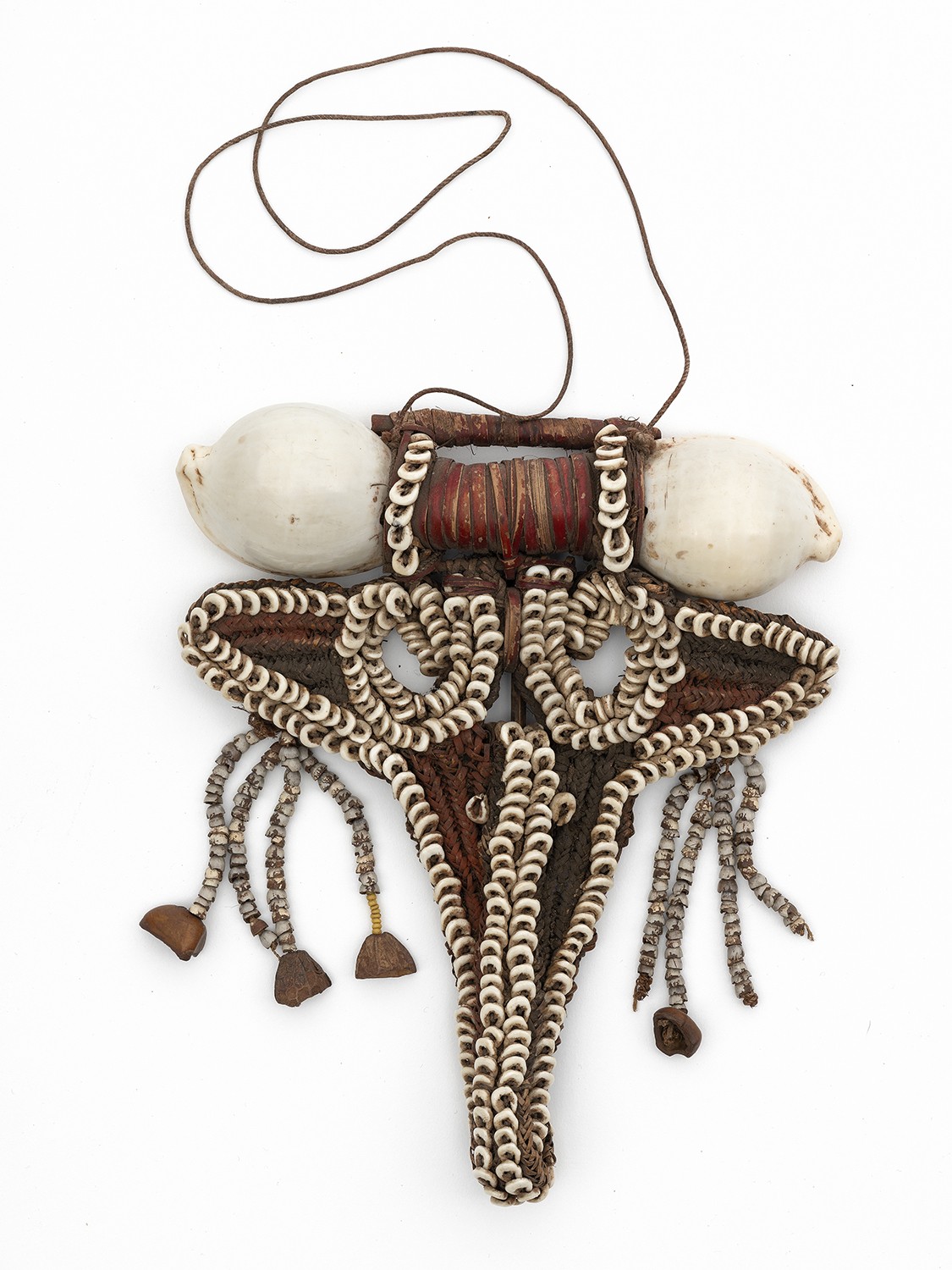 Breast ornament; plant fibres, sea snail shells (nassa, ovulids), woven red leaves, Job’s tears plant seeds; acquisition: Hans Höllerer 1906; collection: Weltkulturen Museum. Photo: Wolfgang Günzel
Breast ornament; plant fibres, sea snail shells (nassa, ovulids), woven red leaves, Job’s tears plant seeds; acquisition: Hans Höllerer 1906; collection: Weltkulturen Museum. Photo: Wolfgang Günzel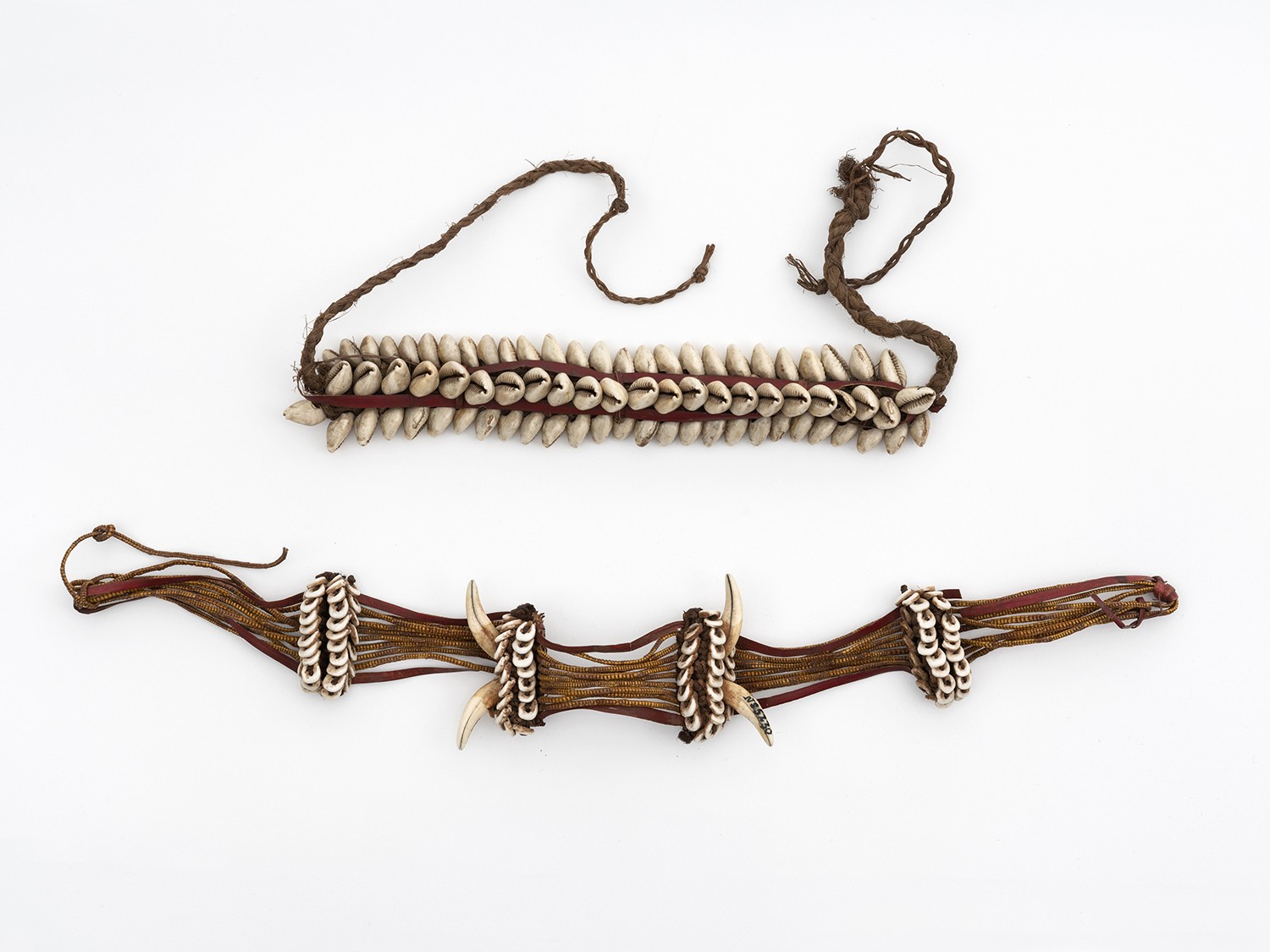 Necklaces. Collector: Hans Meier 1904/1905, acquisition from Hans Höllerer 1906, Collection Weltkulturen Museum. Photo: Wolfgang Günzel
Necklaces. Collector: Hans Meier 1904/1905, acquisition from Hans Höllerer 1906, Collection Weltkulturen Museum. Photo: Wolfgang Günzel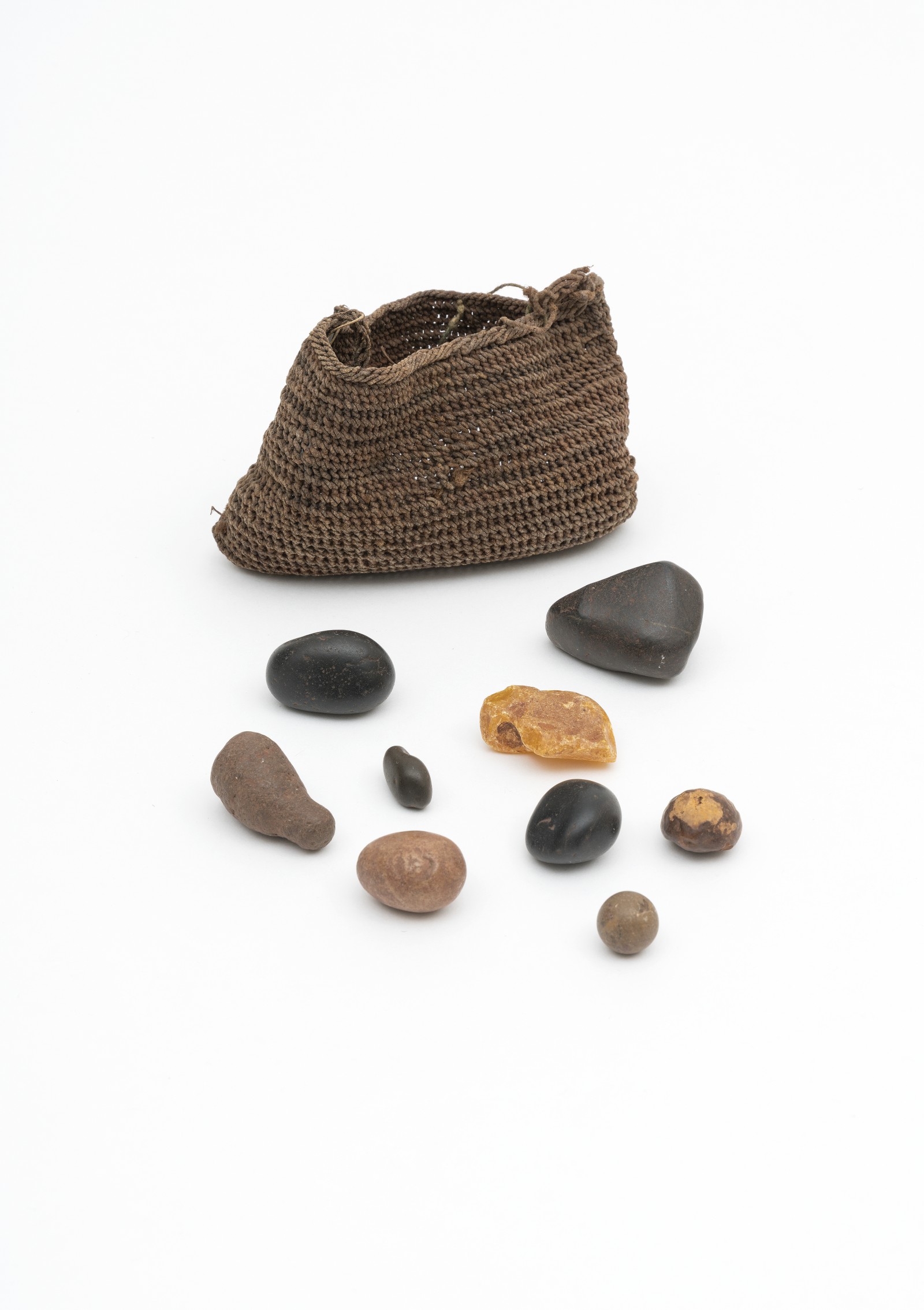 Bag with stones for love magic; plant fibres, stones; north-east coast of New Guinea; collector: Hans Meier 1904-05; acquired: Hans Höllerer 1906; collection: Weltkulturen Museum
Bag with stones for love magic; plant fibres, stones; north-east coast of New Guinea; collector: Hans Meier 1904-05; acquired: Hans Höllerer 1906; collection: Weltkulturen Museum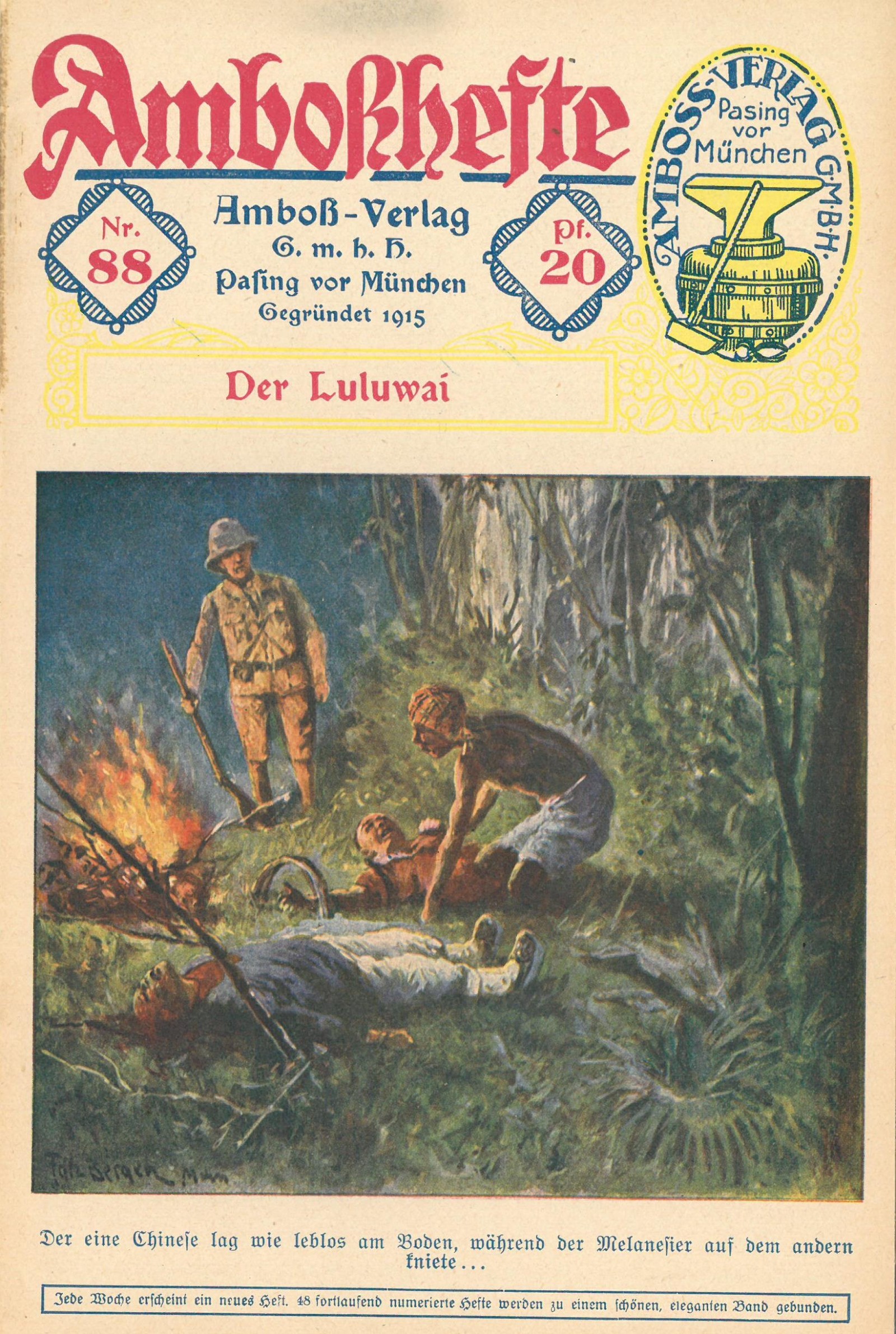 Title image: Hermann Rönninger: Der Luluwai; Amboß-Verlag, No. 88, n. d.
Title image: Hermann Rönninger: Der Luluwai; Amboß-Verlag, No. 88, n. d.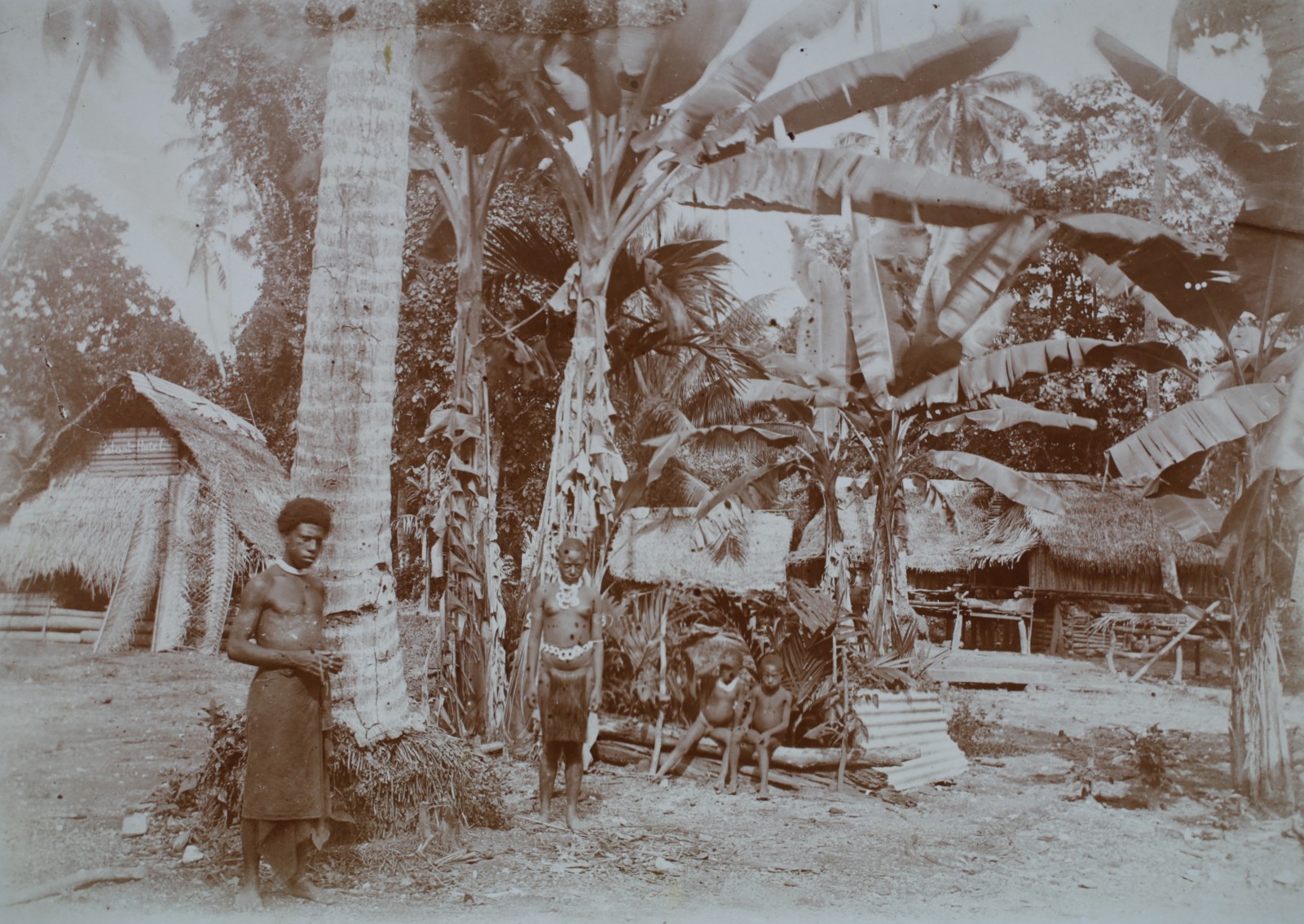 Kulabol Village, Dampier Island, New Guinea. Photo: Hans Meier, 1904-1911. City archive Passau
Kulabol Village, Dampier Island, New Guinea. Photo: Hans Meier, 1904-1911. City archive Passau
The ‘Höllerer Collection’
On the trail of a colonial era collection
Among its holdings, the Weltkulturen Museum in Frankfurt am Main also has a collection of ethnographic objects and artefacts from New Guinea. Acquired in 1906 in the museum’s earliest years, this collection is one of the oldest in the Oceania holdings. Today, the ‘Höllerer Collection’, as it is known, still comprises 95 inventory numbers. All the items come from the north-eastern part of today’s Papua New Guinea, at that time a German colony known as Kaiser Wilhelmsland. The collection is largely made up of everyday artefacts such as bowls, string bags, wooden ornamental combs, dogteeth- and shell ornaments as well as various stone axes and wooden swords. In addition, there are a large number of ritual artefacts such as mourning clothes and bullroarers, as well as all kinds of magical objects.
During the bombing raids on Frankfurt in 1944, the museum was damaged severly, and all the ethnographic objects still stored there destroyed, including 41 inventory numbers from the ‘Höllerer Collection’ as well as the collection’s records. With the loss of the files documenting the acquisition of the pieces, there is almost no surviving information on the history of this collection. Under these conditions, it was extremely difficult to reconstruct the collection’s provenance.
The surviving records (inventory register, inventory cards) list the name of the previous owner. The objects were sold to the museum by an architect called Hans Höllerer, after whom the collection is named. However, a reference to the unnamed collector proved more important. Evidently, he had been a technical specialist working for the Neuendettelsauer Mission Society, and had collected the objects between 1904 and 1905 in the area of Finschhafen. After Imperial Germany established a colony in the north-east of New Guinea in 1885, the Neuendettelsauer Mission Society, which belonged to the Evangelical Lutheran Church in Bavaria, Germany, undertook missionary work among the indigenous people near the town of Finschhafen. This trail led to research in the Mission Archives, held by the Bavarian state archive of the Evangelical Lutheran Church in Nuremberg. Here, it proved possible not only to identify the collector – Hans Meier – but also find an array of details about his life.
From 1904 to 1911, Hans Meier (1876-1955), an architect, was employed as a technical specialist for the mission society. His remit was not only to construct houses and churches, but also build bridges and roads. As a land surveyor, he accompanied the missionaries on many expeditions into the inaccessible interior as well as the surrounding islands. On these journeys, often lasting days at a time, Meier was able to draw on his companions’ broad anthropological knowledge to collect many artefacts and objects. Some of these have small labels attached with his notes on the place of origin, ethnic group and indigenous name of the piece, often with a brief description of its function. The Meier collection also contains a high proportion of cult objects, most likely due to candidates for baptism having to publicly demonstrate their conversion to Christianity by destroying traditional magical or ritual objects such as bullroarers or present them to the missionaries.
Since Meier did not leave New Guinea during his years of working for the mission, he must have asked a trusted intermediary – Hans Höllerer – to sell the collection for him in Germany. Meier may well have been looking for various ways to earn some extra money to boost his earnings. Apart from the collection in Frankfurt, he also sold a similarly comprehensive collection to the Natural History Society in Nuremberg after his return to Germany. He also tried to sell photographs as motifs for postcards, an activity then forbidden by the head of the mission.
In the end, the research into the collection also turned up something totally unexpected – a note in the Nuremberg archives giving Meier’s address in Passau in 1952. To find out the date of his death, the Passau city archive was contacted for details from their register of residents. There, Meier was listed as a ‘writer on geographical matters’ known under the pseudonym of Hermann Rönninger. The Passau city archives also hold his literary estate and papers, including photos from New Guinea. Using his pseudonym Hermann Rönninger, Hans Meier had published a series of adventure tales, mainly in Jambo and Amboß, both ‘penny dreadful’ magazines. He also published an ‘autobiographical’ novel (Aus der Wildnis Neuguineas, 1925). In his writings, Meier claimed he was reporting on his experiences in New Guinea, although he was really mixing reality and fiction. Later, Meier even called himself Meier-Rönninger, creating a persona – resembling the ‚Old Shatterhand legend’ of popular German adventure story writer Karl May – of a colonial pioneer, gold digger, big game hunter and plantation owner who lost everything with the outbreak of the First World War.
Reconstructing the provenance of this ethnographic collection offers a fascinating insight not just into New Guinea in the early 1900s, but also mission history during the German colonial period. Moreover, the biography of Hans Meier also casts an exemplary light on a colonial actor in this period. In this way, the collection itself can once again bear witness to its history.
Matthias Claudius Hofmann,
Weltkulturen Museum
